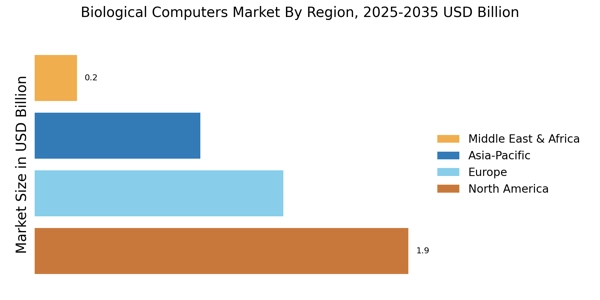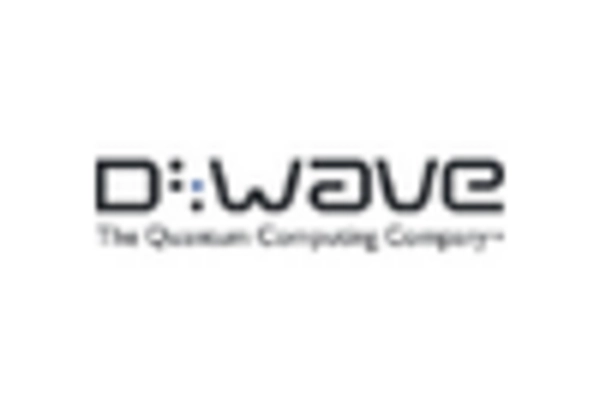Innovations in Synthetic Biology
Innovations in synthetic biology are propelling the Biological Computers Market forward, as researchers develop new methods to engineer biological systems for computational purposes. These advancements enable the creation of biological circuits that can process information in ways that mimic natural biological processes. The integration of synthetic biology with computing technologies is expected to enhance the capabilities of biological computers, making them more versatile and efficient. As a result, investment in research and development within this field is likely to increase, fostering a competitive landscape that encourages further innovation. The potential applications of these technologies span various industries, from pharmaceuticals to environmental monitoring, suggesting a broad impact on the market.
Growing Interest in Biocompatible Technologies
The Biological Computers Market is witnessing a growing interest in biocompatible technologies, which are essential for the development of systems that can interact seamlessly with biological organisms. This interest is driven by the increasing recognition of the potential for biological computers to revolutionize fields such as medicine and biotechnology. As researchers explore ways to integrate biological computing with living systems, the market is likely to expand, attracting investments from both public and private sectors. The ability to create devices that can operate within biological environments opens up new avenues for applications, including targeted drug delivery and real-time health monitoring, thereby enhancing the overall market potential.
Increased Funding for Research and Development
Increased funding for research and development in the Biological Computers Market is a critical driver of growth. Governments and private entities are recognizing the transformative potential of biological computing and are allocating resources to support innovative projects. This influx of funding is facilitating breakthroughs in the design and implementation of biological computing systems, which could lead to significant advancements in various applications. As funding continues to rise, it is anticipated that the market will see accelerated growth, with new startups and established companies alike entering the field. This trend not only enhances the competitive landscape but also fosters collaboration between academia and industry, further propelling the market forward.
Rising Demand for Advanced Computing Solutions
The Biological Computers Market is experiencing a surge in demand for advanced computing solutions that can outperform traditional silicon-based systems. This demand is driven by the need for enhanced processing capabilities in various sectors, including healthcare, finance, and data analysis. As organizations seek to leverage biological computing for complex problem-solving, the market is projected to grow significantly. Analysts estimate that the market could reach a valuation of several billion dollars by 2030, reflecting a compound annual growth rate that underscores the increasing reliance on biological systems for computational tasks. This trend indicates a shift towards more efficient and powerful computing paradigms, positioning biological computers as a viable alternative to conventional technologies.
Emerging Applications in Healthcare and Environmental Monitoring
Emerging applications in healthcare and environmental monitoring are significantly influencing the Biological Computers Market. The ability of biological computers to process complex biological data positions them as valuable tools in these sectors. For instance, in healthcare, biological computing can facilitate personalized medicine by analyzing genetic information to tailor treatments. Similarly, in environmental monitoring, these systems can be employed to track ecological changes and assess the health of ecosystems. The potential for biological computers to address pressing challenges in these fields is likely to drive market growth, as stakeholders seek innovative solutions to improve outcomes and sustainability. This trend suggests a promising future for the integration of biological computing technologies in critical areas.


















Leave a Comment